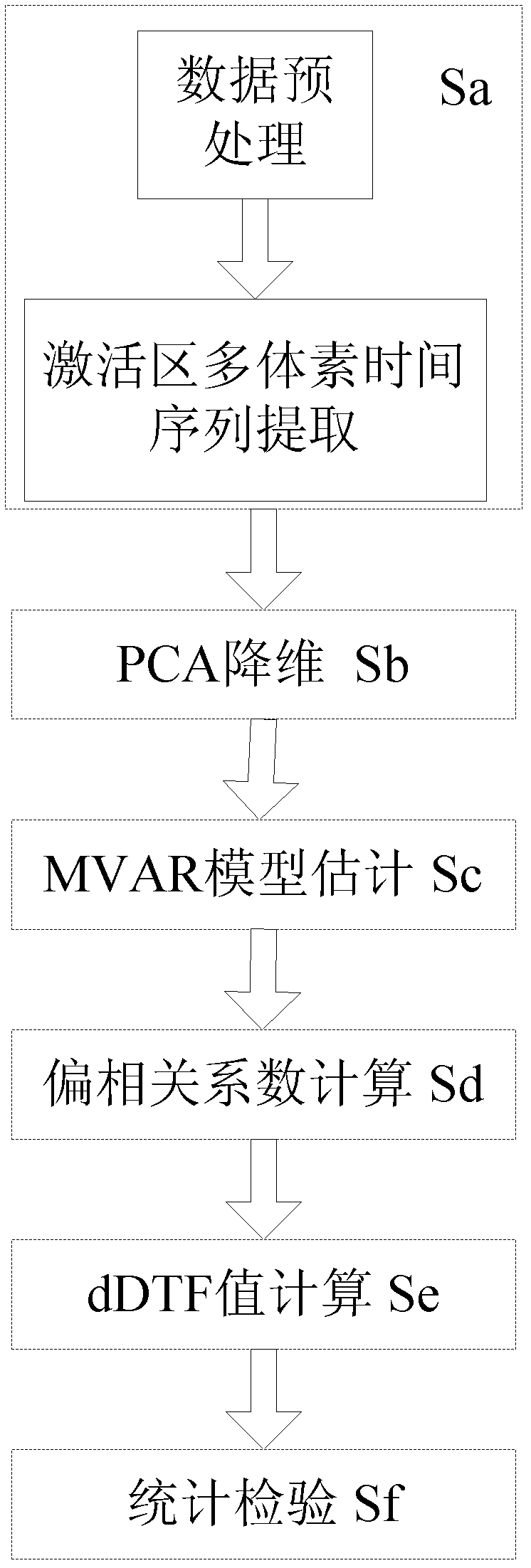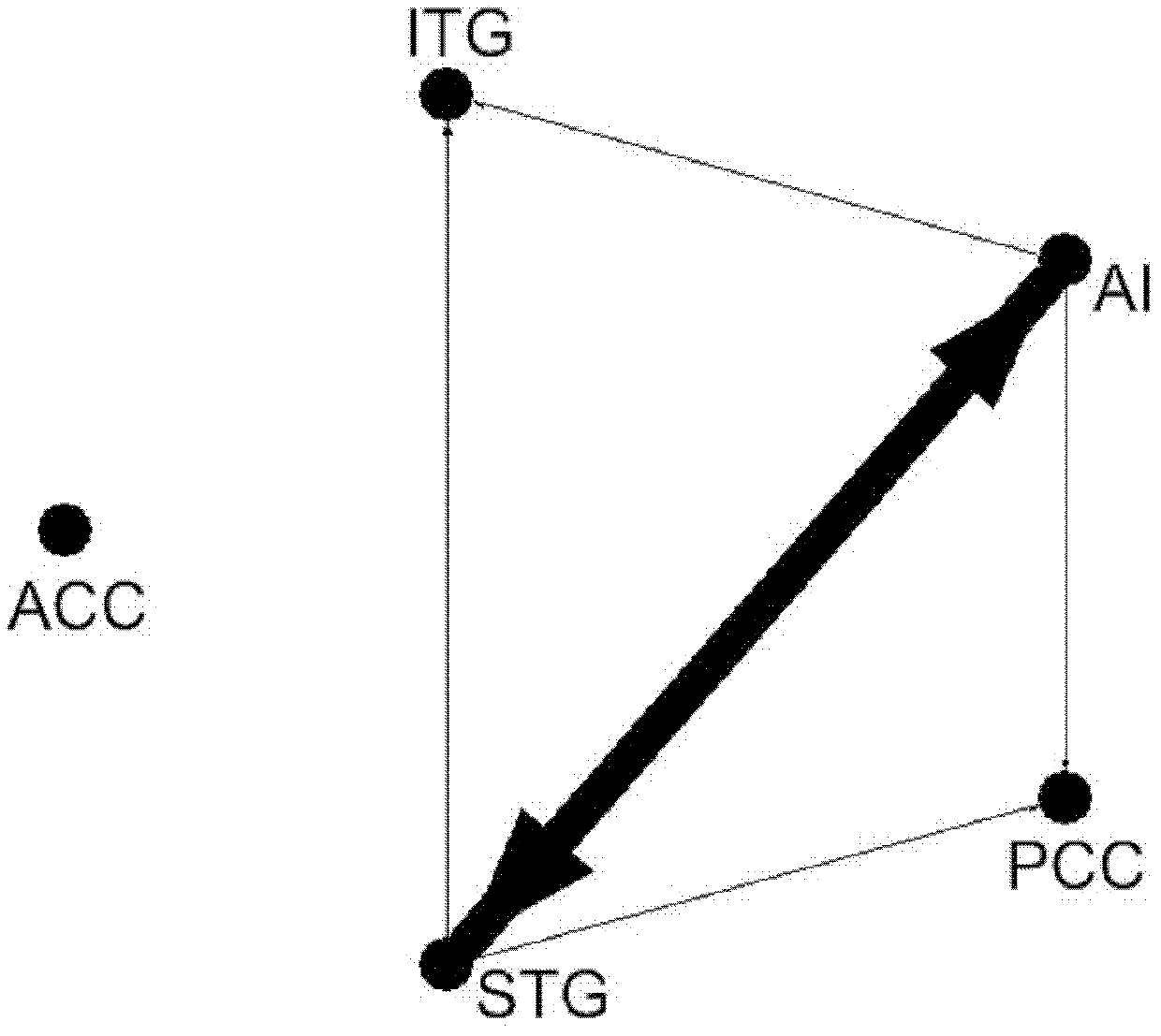Detection method for causal connection strength of magnetic resonance brain imaging based on PCA (Principal component analysis) and GCA (Granger causality analysis)
A technology of connection strength and detection method, applied in the field of image processing, can solve problems such as loss, and achieve the effect of improving accuracy and robustness
- Summary
- Abstract
- Description
- Claims
- Application Information
AI Technical Summary
Problems solved by technology
Method used
Image
Examples
Embodiment Construction
[0016] In order to make the object, technical solution and advantages of the present invention clearer, the present invention will be described in further detail below in conjunction with specific embodiments and with reference to the accompanying drawings.
[0017] refer to figure 1 , a method for detecting causal connection strength of magnetic resonance brain imaging involved in the present invention, particularly involving the use of principal component analysis and Granger causality analysis for the detection of magnetic resonance brain imaging causal connection strength. The specific implementation steps are as follows:
[0018] Step Sa, extracting the multi-voxel time series in the activation area from the brain function image that has undergone data preprocessing, and obtaining the time series matrix of multiple voxels in the activation area;
[0019] 1. Data preprocessing
[0020] Due to the influence of various noises during the MRI scanning process, there are diffe...
PUM
 Login to View More
Login to View More Abstract
Description
Claims
Application Information
 Login to View More
Login to View More - R&D
- Intellectual Property
- Life Sciences
- Materials
- Tech Scout
- Unparalleled Data Quality
- Higher Quality Content
- 60% Fewer Hallucinations
Browse by: Latest US Patents, China's latest patents, Technical Efficacy Thesaurus, Application Domain, Technology Topic, Popular Technical Reports.
© 2025 PatSnap. All rights reserved.Legal|Privacy policy|Modern Slavery Act Transparency Statement|Sitemap|About US| Contact US: help@patsnap.com



